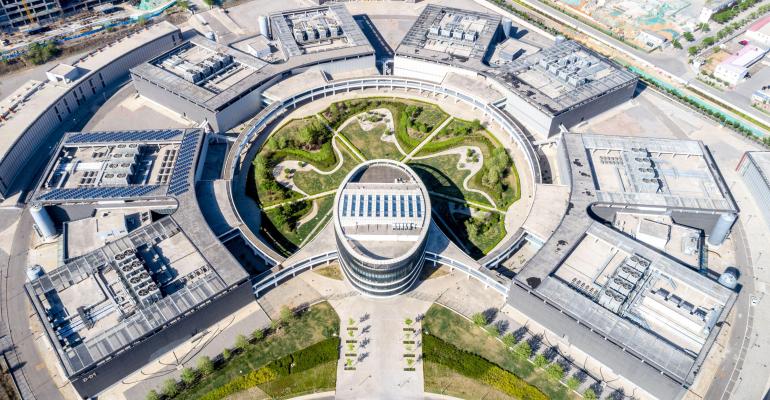As data centers increasingly handle High-Performance Computing (HPC), facilities can be challenged when it comes to delivering the output demanded while balancing the economic viability with the needs of the environment.
Data centers, particularly those handling HPC, are at constant risk of becoming stranded assets – a term that refers to facilities that no longer meet their designed capacity, are no longer economically viable due to changes in technology or business needs, or fail to contribute effectively to sustainability measures.
In the context of data centers, this often relates to cooling challenges and the cooling capacity that the IT equipment (ITE) can’t use.
Failing to Contribute
Power, space, and cooling are the main capacity parameters in the data center. Stranded capacity is installed capacity that cannot be used to support critical load. It refers to data center resources that are not available for use. Unfortunately, most of the time, you don’t even know if you have stranded capacity or, if you do, how much there is.
While critical loads are expected to be renewed, refreshed, or replaced over the lifetime of the data center facility, older, non-energy star certified, or inefficient servers that are still turned on but no longer being used continue to use both power and cooling resources.
It also includes excessive redundancy or low utilization of the redundancy options, a lack of scalable, modular design, and the use of oversized equipment or legacy lighting and controls.
While many may plan for the update and evolution of ITE, the mismatch of power and cooling resources versus the equipment requiring the respective power and cooling inevitably results in stranded assets.
Challenging the Invisible Ceiling
Every data center has an invisible ceiling that limits the amount of ITE that it can cool. With the shift towards HPC data centers, facilities are even more challenged when it comes to having enough cooling capacity to match (and exceed) ITE cooling demand. As data centers become more power-intensive due to HPC requirements, the cooling infrastructure must keep pace.
Inadequate cooling can lead to increased operational costs, reduced efficiency, and environmental concerns. It’s a problem since it prevents data centers from meeting design capacity and also restricts them from becoming sustainable and energy efficient. It’s also an expensive problem since wasted cooling energy is not contributing to the overall cooling of the ITE.
Stranded capacity is wasted energy, cooling unnecessary equipment, and lost cooling to areas that need not be cooled. Stranded cooling capacity can include bypass air (supply air from cooling units that is not contributing to cooling the ITE), too much supply air being delivered from the cooling units, lack of containment, poor rack hygiene (missing blanking panels), unsealed openings under ITE with raised floors, just to name a few.
Combating the Inefficiency
Releasing stranded capacity improves energy efficiency, reduces costs, and allows for increased data center capacity without additional cooling equipment. To avoid becoming a stranded asset, organizations should conduct thorough assessments when building or upgrading data center facilities.
While the root cause for stranded assets is often down to operational issues and conflicts of management or space allocation, future scalability, energy efficiency, and identifying technology obsolescence must be considered with strategic changes or updates.
A lack of metering and metrics can contribute significantly to an inefficient data center. To combat this, it’s highly recommended to use data center monitoring software to help identify and eliminate wasted energy within the data center white space. Monitoring and compliance with operational best practices can minimize the power and cooling imbalance effectively, but this needs to be an ongoing and continually updated process to reduce risk.
Realizing the Energy Savings
Air management and control is a prerequisite to many energy efficiency measures. Wasted air is, after all, wasted money. Realizing energy savings through correct air management can be done in two ways. First, to physically rearrange the space to promote the separation of hot and cold air. While this measure by itself does not save energy it does enable future savings to be made. Secondly, one of two of these actions must be taken: increase the supply air temperature and/or decrease the supply airflow rate.
Other options for energy savings include removing server waste. Idling or unused servers can consume up to 60% of full power while delivering no tangible output. Under-utilized ITE can be consolidated, saving space and optimizing the utilization of the ITE that you do need. Virtualization may be the most powerful of consolidation approaches. It consolidates applications from under-utilized ITE onto fewer items and better-utilized hardware.
Some organizations opt for colocation or cloud-based solutions to minimize the risk of stranded assets by outsourcing their data center needs to providers that specialize in maintaining infrastructure.
Saving for the Future
Addressing the challenge of the stranded asset is vital for ensuring the industry remains both sustainable and economically viable while laying the financial foundation for its long-term future.
It makes no sense to allow ITE to take up space that’s either not being used, consumes power but gives nothing in return, or indeed utilizes energy that affects and upsets the environmental equilibrium.





